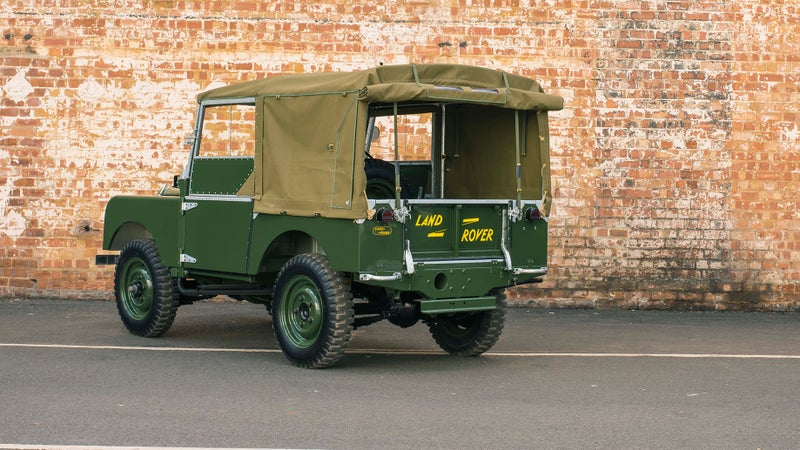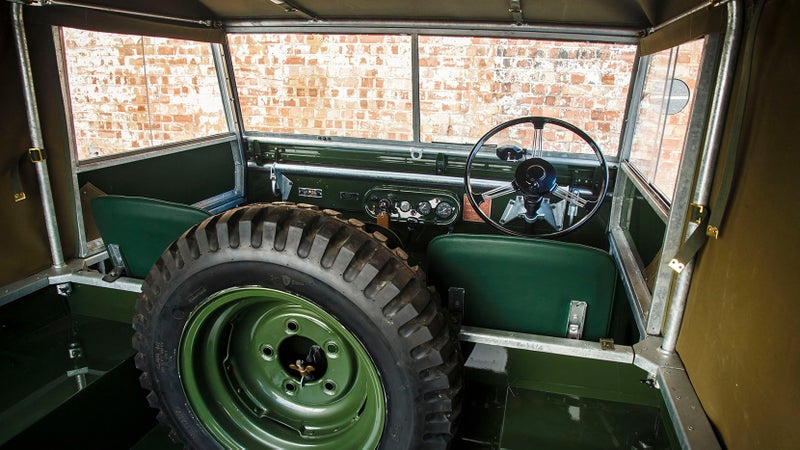Land Rover has big plans for its next Defender, due in late 2018. Historically selling only 10,000 or so of the old-school model (production ended in January), it’s targeting an annual volume of 100,000 for the next, potentially providing a direct rival for the Jeep Wrangler. And what better way to start driving demand for the new truck than by reminding people just how great the first one was?
That’s the idea with Land Rover’s new “” program, which will eventually offer the brand’s customers factory restorations of their own vehicles. To begin, though, the company is selecting 25 prime examples of the original 1948 Land Rover Series 1 and restoring them to factory-new condition.

Restorations will take place at Land Rover’s Solihull factory, and be carried out with original, or, where necessary, recreated parts. The process is far from typical, and its exacting degree of originality will take between six to nine months per individual vehicle. The quality of work should be so good that Land Rover is guaranteeing it with a factory warranty, spanning 12 months and 12,000 miles. It will, of course, also come at a price: $85,000 to $110,000 per vehicle. A rate far in excess even of today’s inflated classic car market. (A friend just purchased a privately-restored Series 1 for $15,000.) I guess customer-funded brand marketing doesn’t come cheap.
The project also represents the launch of Land Rover Classic, a new factory service that will, at an undetermined time in the future, offer owners similar OCD levels of factory restoration for their own vehicles. Have a first-generation Range Rover or maybe an awesome built-out Discovery? This will be the nuclear operation to take it back to brand new, warranteed condition.

What can all this tell us about Land Rover’s plans for the next Defender? According to that vehicle will depart significantly from the classic Defender's throwback, utilitarian design, but also look nothing like the concepts and renderings that have been floating around for the last few years. That’s not necessarily a bad thing: the last Defender was eventually killed-off by progressing pedestrian safety regulations, which no longer allow solid boxes of steel to drive around, impacting people’s bodies like 4,000-pound hammers. Our sincere hope is that, with a the company putting an exclamation point on the capability of the original model, the nameplate will carry forward as a genuinely capable off-roader, rather than the soft, luxury crossovers that the rest of the brand’s range has become.



